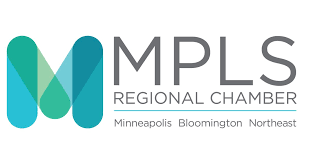Reading a brand’s Franchise Disclosure Document (FDD) is like eating spinach: You may not like it but you’ll be better for it!
Though it may be dry legalese, an FDD tells a brand’s story in ways that help you make an informed investment decision. So face it, as part of your due diligence, you will need to carve the time to plod through those 300+ pages.
But fear not, this blog serves as your able tour guide, taking you through all 23 items (or “chapters”) of the FDD. For each section we offer explanations, tips and insight to help you get the most from your reading. It may be helpful to print and keep this by your side as you move from item to item.
What to Know Before You Start
- If you’re not familiar with an FDD’s purpose and how to leverage it during your discovery process, check out this blog before diving in
- If you’re seriously considering investing in a brand, enlist a franchise-experienced attorney to help you review and understand the Franchise Agreement that’s embedded in the FDD (Item 22)
- The FDD is an important but not the sole source of information to rely on during your due diligence; your direct conversations with the brand’s senior executives and franchisees are equally critical in shaping an informed picture of the investment opportunity
With that said, off we go!
Item 1 — The Franchisor and any Parents, Predecessors & Affiliates
Provides an overview of the franchisor’s background and history. Key data points include:
- How long the franchisor has been in business (longer is better, of course)
- Affiliate businesses that the franchisor may operate
- Marketplace competitors
- Industry regulations to be aware of
Item 2 — Business Experience
Identifies the executives who lead the franchise. Look for leaders who have a track record in franchising and the industry sector in which the brand competes — after all, you are trusting them with your money!
Item 3 — Litigation
Tells you if the franchisor or any of its officers and directors have been convicted of felonies relating to fraud, franchise law violations or unfair/deceptive practices, or other misconduct.
Keep in mind litigation is not uncommon and a lot of it can be explained away. Examples: A franchisor taking a franchisee to court for a violation of their agreement, such as unpaid royalties – and, an unhappy franchisee suing a franchisor for some perceived wrong.
A pattern, however, is a flag – it could reflect sour relations between the franchisor and franchisees and financial struggles among multiple franchisees. Asking clarifying questions will help you determine how serious the issue may be.
Item 4 — Bankruptcy
Discloses if the franchisor or any of its executives have recently been involved in bankruptcies. This reflects on the franchisor’s financial management and should be a key factor in your decision to invest.
Item 5 — Initial Fees
Summarizes the upfront fees for buying and operating the franchise. These include the one-time franchise fee plus possible equipment, supply, software, technology, training and opening assistance fees.
These fees typically are not refundable so review them carefully before signing your agreement.
Moreover, the fees in Items 5, 6 and 7 are an example of why you should retain a franchise attorney to review the FDD with you before you conclude your due diligence. You want to fully understand what you will pay and when – and avoid misunderstandings.
We can recommend exceptional franchise attorneys. This blog further explains the vital role they play in your discovery process.
Item 6 — Other Fees
Recaps ongoing and one-time fees you will incur once your business is up and running. Most notable are the royalty and brand fees. The latter is used to support sales and marketing efforts.
Do not overlook the transfer fee (which applies when you sell your business) and potential penalty fees for items like late payments, insufficient funds and audits. It’s easy to skip over these and be surprised later.
By the way, these fees, like those in Item 5, tend to be non-refundable.
Item 7 — Estimated Initial Investment
Addresses the inevitable question: How much will I need to invest? This section itemizes all of your upfront fees – including the estimated buildout costs if your business requires a brick-and-mortar location.
The Item 7 numbers are a starting point as you project start-up costs and begin building a pro forma. Most franchisors help the process along by also providing a blank templated spreadsheet you can use to key in your assumptions and arrive at your “all in” investment total.
The focus you put on Item 7 will be consequential to your financial success, so consider these tips:
- Err on the high end of each estimated cost unless you are absolutely certain the price will be less
- Consider adding more working capital; Item 7 usually includes three months’ worth, often not enough
- Always validate your projections with multiple franchisees; there’s no substitute for their real-world experiences
- Enlist a franchise-experienced CPA, particularly for help with tax planning
Item 8 — Restrictions on Sources of Products & Services
Specifies the approved products and services you must purchase and offer, from which suppliers, as well as any restrictions.
Also covered here is the franchisor’s relationship (if any) with suppliers, and the process to follow if you’d like to have an alternative supplier considered. This section is fairly standard across brands, and a hallmark of the franchising business model.
Item 9 — Franchisee’s Obligations
Lists your obligations under the franchise and other agreements. When it comes to knowing roles and avoiding surprises, this is an excellent at-a-glance summary.
Item 10 — Financing
Discloses financing (if any) available to you directly from the franchisor. Most franchisors refrain from this and rely on you to work with a bank or other financing entity.
However, there are cases where a franchisor may offer terms more favorable than available elsewhere, so always ask.
Item 11 — Franchisor’s Assistance, Advertising, Computer Systems & Training
Similar to Item 9, except here the franchisor outlines its obligations to you in a variety of areas covering your ramp period, grand opening, and on a year-round basis.
A big portion of your royalty fee goes to support and training – so this section should shed light on how you get bang for your buck!
Take a close look at how exactly you will be trained and supported, how frequently, whether your employees are included (or must YOU train them), is there 24/7/365 access to an online learning system, and will coaches make on-site visits to your location.
This is where superior franchise systems separate from average ones. Don’t short-shrift this section.
Item 12 — Territory
Defines the territory in which you will do business. Be aware this will vary across franchisors depending on their business model, target customer and go-to-market strategies.
Boundaries could be based on population, zip codes, specific customer demographics, number of target businesses and other criteria.
In some cases, such as business models where a franchisee is free to deal with anyone anywhere (business consultants, for example) there may be no physical boundaries at all.
This section also addresses the type of facility (such as retail or warehouse) that may be required to run your business, and should tie back to your Item 7 estimated buildout costs.
Item 13 — Trademarks
Summarizes the company’s trademarks and how you may use them. Given that this is a key reason to invest in a franchise versus starting your own business, it is critical to confirm that a brand’s trademarks are properly registered and protected. A franchise lawyer will do this for you.
Item 14 — Patents, Copyrights & Proprietary Information
Similar to Item 13, this section discloses pending & current patents, copyrights and other relevant proprietary information. Here again, given the importance of these assets to your investment, a franchise lawyer will confirm they are not legally vulnerable.
Item 15 — Obligations to Participate in the Actual Operations of the Franchise Business
Provides an overview of your operational obligations as a franchisee, including whether you are expected to be directly involved in running the business or can oversee it passively or on a semi-absentee basis via a General Manager-type employee.
This section also lays out who is required to sign payment and performance guarantees and other legal documents – whether it be you or someone on your behalf.
Item 16 — Restrictions on what the Franchisee May Sell
Spells out, similar to Item 8, the products and services you may sell, where they may be sold, and which suppliers to buy from.
Item 17 — Renewal, Termination, Transfer, and Dispute Resolution Procedures
Defines the terms, rights and restrictions related to the termination or transfer of your Franchise Agreement. Be careful to note how the franchisor will resolve disputes – via arbitration or the courts; your franchise lawyer’s explanation of the implications for each will be helpful here.
Item 18 — Public Figures
Discloses celebrities, pro athletes and other public figures whose names or physical appearances are associated with the franchise – including the figure’s role and duties and benefits provided, such as compensation.
Item 19 — Financial Performance Representations
Among the most-referenced sections, this is where a franchisor provides data about the actual or potential financial performance of its franchised and franchisor-owned locations.
Be aware only about two-thirds of brands populate this section, and the volume, format and usefulness of the data vary greatly.
The most common data points are gross, median and average revenues per location. Some franchisors go deeper – such as operating margins, average ticket size, customer conversion rates, even complete income statements.
Regardless of how much information is provided, watch for:
- Huge differences in performance between franchisor-owned vs. franchisee-owned locations
- Missing expenses and fees (such as royalties) that paint an incomplete picture of profitability
- The percent of operating locations actually included in the data (the more the better)
- Impressive numbers that are skewed by a small sample set of locations
- Data from markets that do not reflect the area where you want to do business
Be mindful that:
- Reviewing the data (and footnotes!) with a franchise-experienced CPA will put context and clarity around the numbers
- There is no assurance your business will achieve results to those reported in this section; your marketing efforts, management skills, the location where your business is located and other factors will influence your success
Most importantly:
As with Item 7, the data provided in Item 19 help inform the projections you key into your franchisor-provided pro forma spreadsheet. You will want to review and validate your assumptions with multiple franchisees within the system you are considering.
Item 20 — Outlets and Franchisee Information
Among the most telling and useful FDD sections, this item features five charts that show a franchise system’s growth and owner turnover over the past three years, plus a directory of current and former franchisees.
Failure rates are understandably a huge concern for anyone thinking about investing in a business. Item 20 removes the guesswork and tells you exactly how well the brand is faring. Tips and signs to watch for:
Franchise System Growth
- If growth is explosive, does the franchisor have the infrastructure to keep up and launch you with the proper support and cadence?
- If growth is slow, is it because the system is already large and established or is something dissuading investors from flocking to the concept – what else should you know?
- If there’s a huge backlog of locations sold but not opened, what’s the hold up and implications for your timely launch?
- What’s the mix of corporate-owned to franchisee-owned locations? Most franchisors own a handful of locations, primarily as test labs. It’s worth questioning those with no locations (why not?) and those with dozens (is the focus on helping franchisees or the corporate office succeed?).
Franchise System Failure Rate
If owner termination and turnover rates are trending up or relatively high, learn what the drivers are and how they may affect your investment. Are owners selling to cash in on huge profits or fleeing a sinking ship?
Look at close rates for your state – if they are relatively high compared to other areas, dig deeper, this could be a flag.
Here’s some context: The average annual failure rate for small businesses in the United States is about 6.5% over a 10-year period. It is much worse for businesses in their first three years of existence, about 13% a year.
Whatever brand you invest in should easily outperform these averages. In fact, a study by Entrepreneur magazine of 1,700 franchise brands across multiple business sectors shows a failure rate of 4% over a five-year period. That strikes us as remarkably low, but it does underscore that you should not settle for an “average” brand. Look for brands whose 3-year failure rate, per Item 20, falls below 15% – or below 5% per year.
Franchisee Directory
Franchisors will provide contact info for franchisees they believe will be open and helpful, but it’s okay to cold-call others, especially those no longer in the system
- Prioritize franchisees who operate in markets similar to yours; for example, if you are in a major metro area in the Midwest, contact big-city owners in that region
- Speak with at least 10 franchisees – but be aware that this “validation” phase of your due diligence must be handled artfully for you to get the information you want
- Expect unhappy franchisees; there will always be some. Look for patterns and similarities in responses in order to develop a balanced assessment of the system’s performance
Speaking With Franchisees
There’s an art to introducing yourself, making the franchisee comfortable and percolating a conversation that’s productive and enjoyable for both of you.
As you can imagine, franchisees are likely to be guarded in their conversations if you have not been referred by the corporate office; you could be a competitor seeking intelligence, for all they know.
Even if you have been referred, they may be less forthcoming than you desire.
If you are not working with a franchise consultant or coach, we’re happy to walk you through our primer for this phase of your due diligence process.
Item 21 — Financial Statements
Contains the franchisor’s audited financial statements for up to the past three years, giving insight into the brand’s financial health.
Except for very new brands, a sure sign of stability and solvency is having the majority of revenue come from royalty fees, not reliance on the sale of new franchises.
Having a franchise-experienced CPA review this section with you is a smart move prior to signing your agreement.
Item 22 — Contracts
Lists and includes copies of all agreements and contracts you are expected to sign depending on the state in which you reside. These include leases, options, financing agreements, purchase agreements and, of course, the Franchise Agreement itself.
Also of note, this section may include a “disclosure questionnaire” asking you to confirm that you have not been disclosed information inconsistent with the FDD.
This is a particularly important document to review with your franchise attorney as it could prevent you from suing the franchisor in the future for alleged fraud or misrepresentation in the offer and sale of the franchise.
Item 23 — Receipts
Contains a two-page “Disclosure Document” that you must sign and return to the franchisor upon receipt of the FDD.
The Federal Trade Commission requires that you must have the FDD in your possession for a minimum of 14 calendar days before signing an agreement and making a payment. Your signature and return of the disclosure document is proof that the franchisor has complied with this timeline.
However, let’s emphasize: Signing and returning the receipt does NOT require you to invest – it’s merely a confirmation that you received the FDD within the required timeframe.
Due Diligence Worth Doing!
Well, there you have it. All 23 FDD items reviewed. This may take a little longer to digest than a spinach salad, but you’ll be in a much better place to make a smart and informed decision!
Want Help Evaluating Franchise Opportunities?
We can help you identify and invest in the franchise business that is right for you. Our personalized ownership recommendations help you save time, reduce risk and invest confidently – with no fee or hidden costs.
Our process starts with a free 15-minute conversation during which we introduce ourselves, learn about you and give you a sense of how we’d work together. You can then decide if you’d like to proceed.
No obligation, no catch – we invite you to chat when you’re ready. You can schedule easily online for the date and time of your preference.






